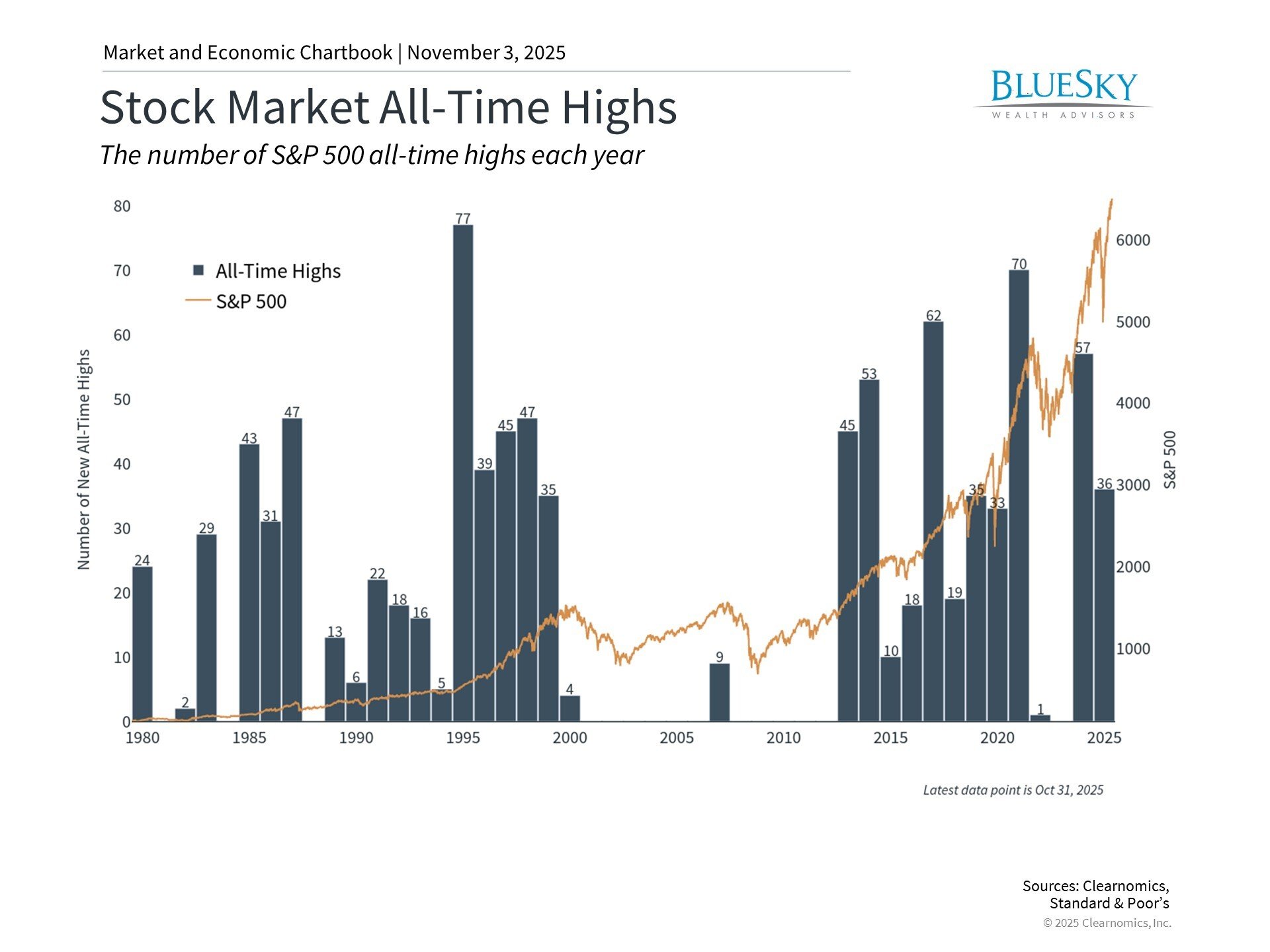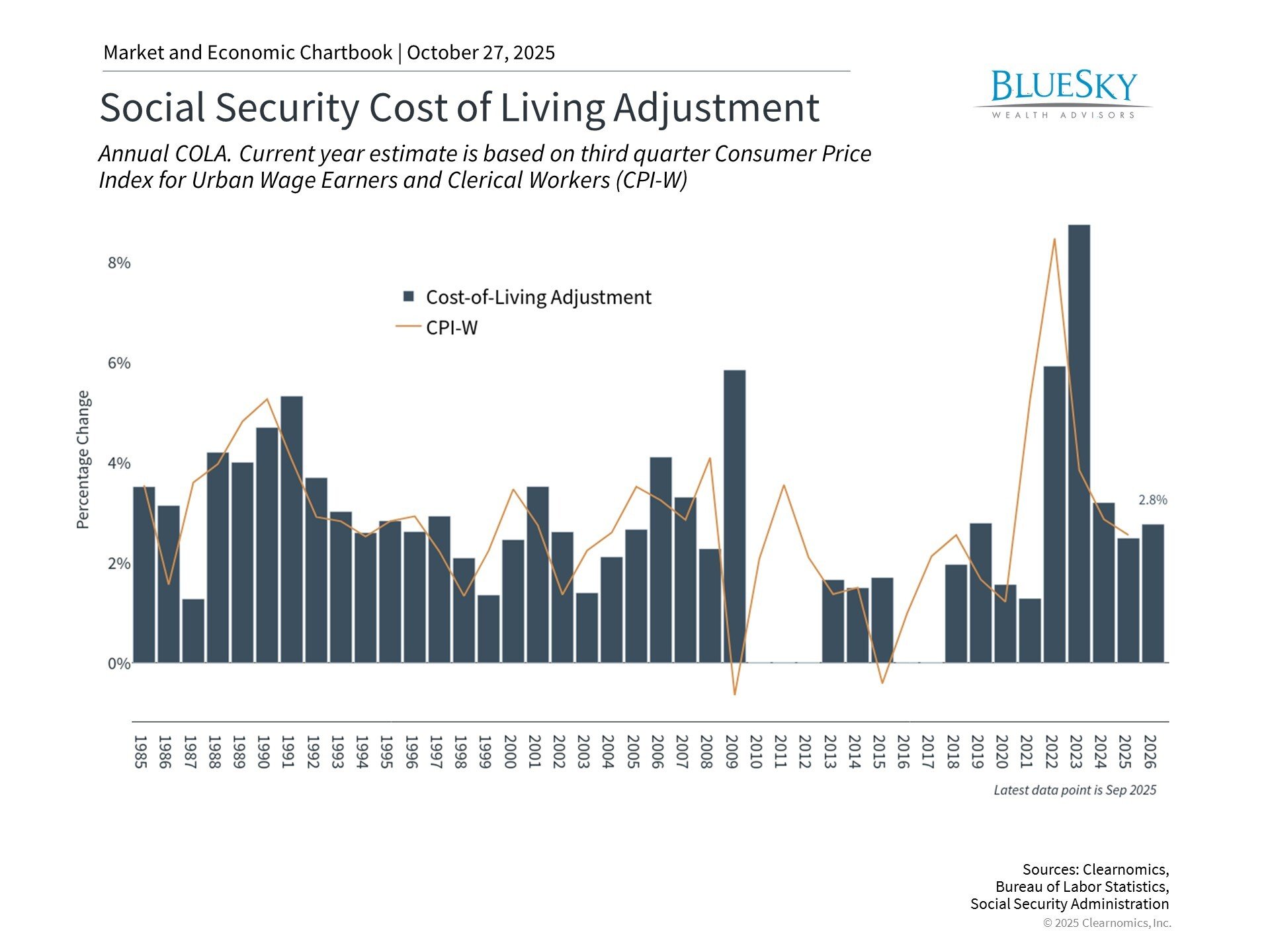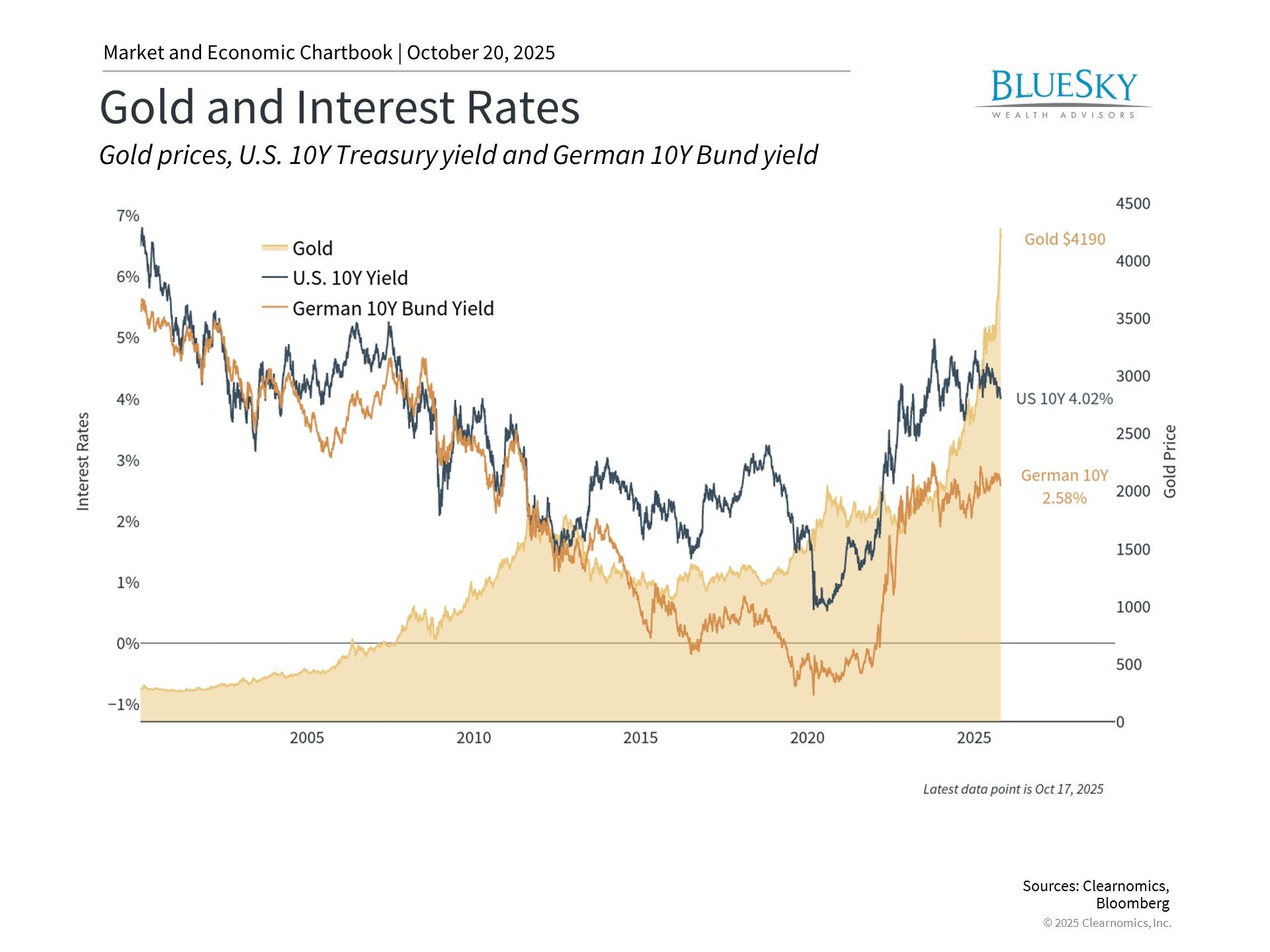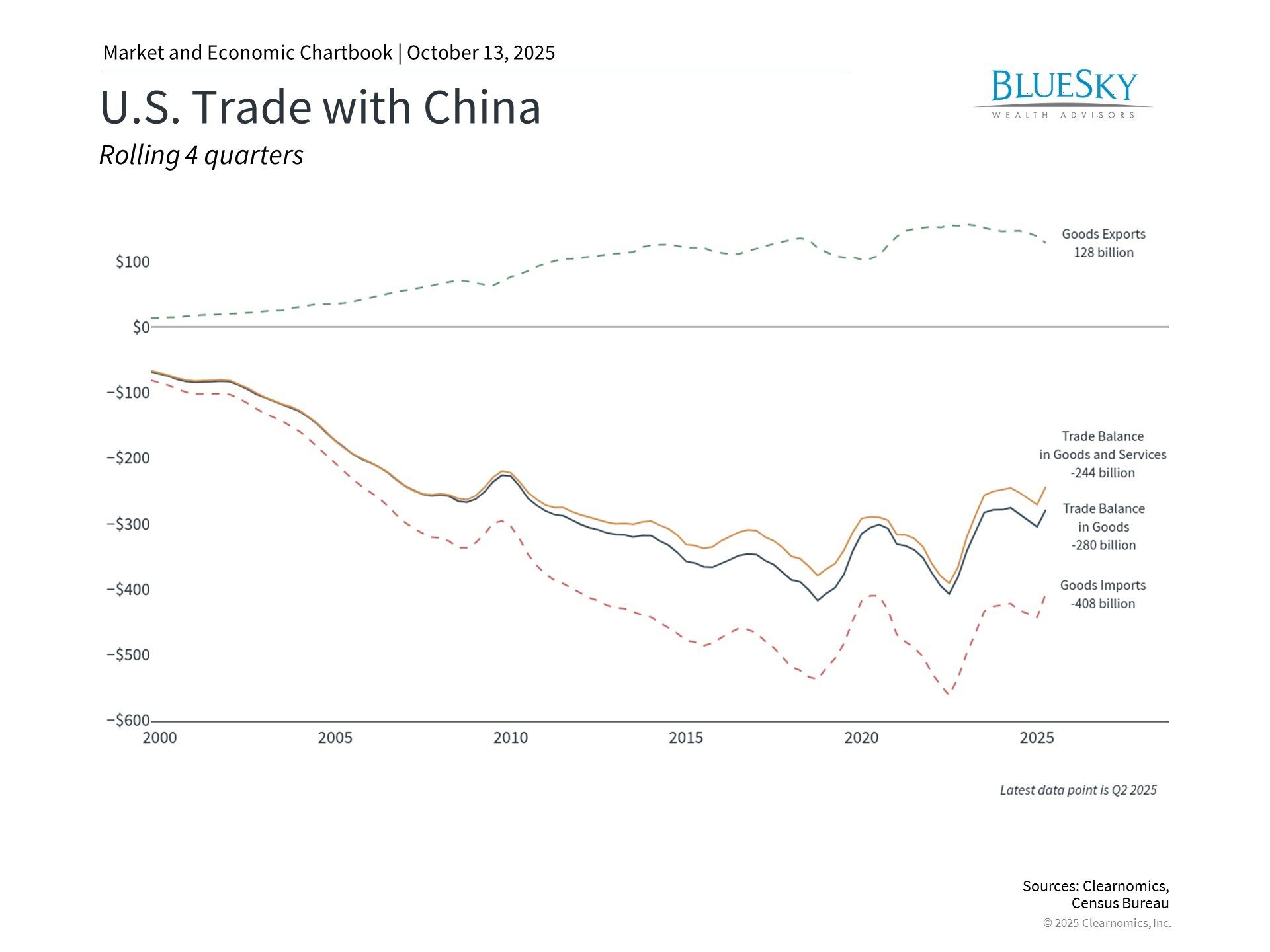
Top 10 Income Producing Assets for 2024: Ultimate Guide
Top 10 Income Producing Assets for 2024: Ultimate Guide

When you’re looking for a list of income-producing assets, it’s crucial to pinpoint those options that can help achieve financial independence and create a long-lasting legacy. The primary assets include rental properties, dividend stocks, bonds, REITs, and CDs. Each of these avenues offers a unique blend of cash flow, stability, and growth potential essential for diversifying your investment portfolio.
Achieving a stream of passive income is akin to planting a garden; it requires patience, nurturing, and a diverse selection of plants (or assets, in this case) to flourish. The beauty of passive income lies not only in its ability to grow wealth but also in its power to offer financial freedom and peace of mind. Yet, it’s the wise choice of these assets and understanding their nuances that paves the path to success.
Diversification stands as a cornerstone principle in the investment realm, significantly lowering risk while potentiating income across different sectors. Just as you wouldn’t wear a raincoat in every weather, investing solely in one type of asset exposes you to unnecessary risks. Incorporating a variety of income-generating assets ensures that you’re well-equipped for the financial climate ahead, no matter the forecast.
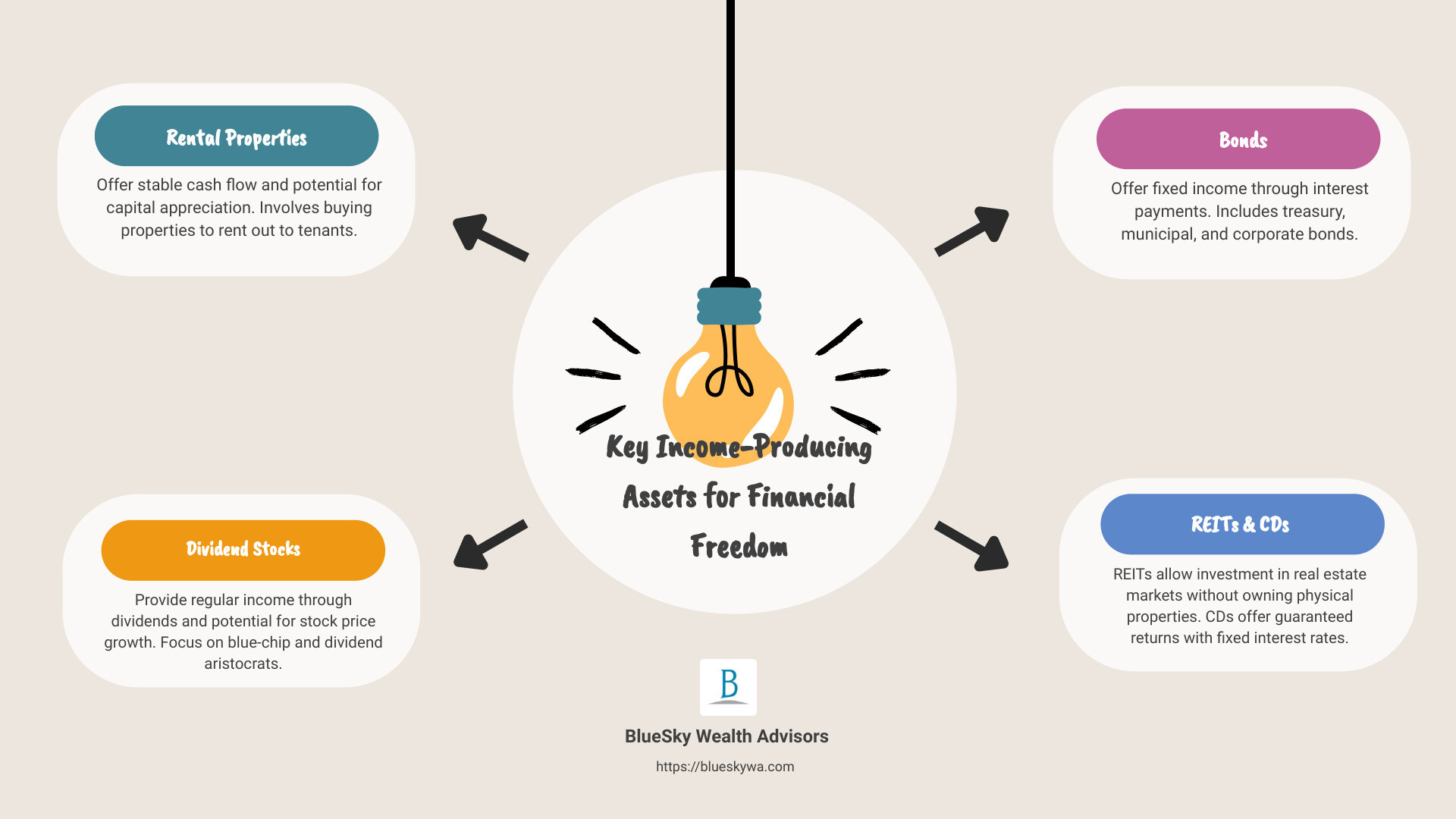
Key Concepts in Income-Producing Assets
When diving into income-producing assets, three key concepts stand out: Cash Flow, Stability, and Growth Potential. Understanding these can guide you to make informed decisions that align with your financial goals.
Cash Flow
Think of cash flow as the oxygen your investments breathe. It’s the regular income you receive from your assets, be it monthly rent from real estate, dividends from stocks, or interest from bonds. Positive cash flow means your asset is not just alive but thriving, putting money into your pocket without you having to sell it.
Stability
Stability is all about how your investment can weather storms. It’s the predictability and safety of your income stream. For example, bonds issued by the government or large corporations are considered stable because they promise fixed returns over time. Stability is crucial for those who rely on their investments for regular income, like retirees.
Growth Potential
Growth potential is the future value of your income-producing asset. It’s not just about the cash flow it generates today but how much it could be worth tomorrow. Stocks and real estate often have high growth potential, meaning they could appreciate in value over time in addition to providing income.
Why These Matter
Together, these concepts form the backbone of a solid investment strategy. Cash Flow ensures you’re seeing a return on your investment now. Stability offers peace of mind, knowing your asset is less likely to lose value suddenly. Growth Potential is your ticket to wealth accumulation, offering the chance for your assets to increase in value.
Balancing Act
The trick is to balance these elements in your portfolio. High-growth assets often come with higher risk, while stable assets might offer lower returns. Your ideal mix depends on your financial situation, goals, and risk tolerance.
For instance, if you’re nearing retirement, stability might be your priority. But if you’re young and building wealth, you might lean towards assets with higher growth potential.
In Practice
A diversified portfolio might include:
– Rental Properties for cash flow and growth potential
– Dividend Stocks for a balance of growth and income
– Bonds for stability and consistent income
– REITs for real estate exposure without the need to manage properties
By spreading your investments across different assets, you’re not just aiming for income. You’re building a foundation that aims to grow, endure, and provide for you, no matter what the economic weather brings.
In the next section, we’ll dive deeper into Real Estate as a Cornerstone for Passive Income, exploring how different types of real estate investments can play a crucial role in achieving these key concepts.
Comprehensive List of Income Producing Assets
When we talk about creating a stream of passive income, there are several assets that stand out for their ability to generate steady cash flow. Let’s break down some of the most reliable options:
Rental Properties
Owning property and renting it out is a tried and true method for generating income. Whether it’s a single-family home, an apartment, or a commercial space, rental properties can provide a consistent source of cash. The key is to find a good location and manage your property well, either on your own or through a property manager.
- Fact: Real estate has historically been a hedge against inflation, making rental properties an attractive option for long-term investment.
Dividend Stocks
Investing in companies that pay out dividends is another solid strategy. These stocks provide you with a share of the company’s profits regularly. Look for companies with a strong history of dividend payments.
- Quote: “The beauty of dividend stocks lies in their dual earning potential: the potential for the stock to increase in value and the steady stream of income provided by dividends.” – Investment Guru
Bonds
Bonds are essentially loans you give to a government or corporation, and they pay you back with interest. They’re considered safer than stocks but offer lower returns. Bonds can be a good way to balance the risk in your portfolio.
- Statistic: Government bonds, known for their safety, have offered returns averaging around 2-3% in recent years.
Real Estate Investment Trusts (REITs)
REITs allow you to invest in real estate without owning physical property. They’re companies that own, operate, or finance income-producing real estate. REITs are known for paying high dividends, making them a great source of passive income.
- Case Study: Many investors have turned to REITs as a way to gain exposure to real estate markets without the hassle of direct property management.
Certificates of Deposit (CDs)
CDs are time deposits offered by banks with a fixed term and interest rate. They are FDIC insured, making them a low-risk investment. While the returns may not be as high as other options, they offer a safe way to generate income.
- News: With interest rates slowly climbing, CDs are becoming an increasingly attractive option for risk-averse investors looking for stable returns.
By diversifying your portfolio across these assets, you can create a robust stream of passive income. Each has its own set of benefits and risks, so it’s important to do your research and consider your own financial goals and risk tolerance.
In the next section, we’ll explore Real Estate as a Cornerstone for Passive Income, highlighting how this asset class can significantly contribute to your income-generating portfolio.
Real Estate as a Cornerstone for Passive Income
Real estate has long been recognized as a solid foundation for generating passive income. Its tangible nature, combined with the potential for both capital appreciation and steady cash flow, makes it an attractive option for many investors. In this section, we delve into three key areas of real estate investment: Rental Properties, Real Estate Investment Trusts (REITs), and Crowdfunded Real Estate.
Rental Properties
Buy-to-Let: This traditional approach involves purchasing a property directly to rent it out. The allure here is clear—steady rental income, potential property value increases over time, and the ability to leverage bank financing to grow your portfolio. However, it requires significant upfront capital and involves ongoing property management responsibilities.
Property Management: While owning rental properties can be lucrative, it’s not without its challenges. Maintenance, tenant management, and legal compliance are all critical aspects. Many investors opt to hire property management companies to handle these tasks, allowing them to enjoy truly passive income. It’s a cost versus convenience consideration that each investor must weigh.
Real Estate Investment Trusts (REITs)
Publicly Traded REITs: These are companies that own, operate, or finance income-generating real estate and are traded on major stock exchanges. They offer a more liquid form of real estate investment, allowing investors to buy and sell shares easily. Additionally, they’re required to distribute at least 90% of their taxable income to shareholders in the form of dividends, making them a popular choice for income-focused investors.
Private REITs: Unlike their publicly traded counterparts, private REITs are not listed on stock exchanges and are available only to accredited investors. They often focus on specific sectors of the real estate market and can offer higher returns, albeit with higher risks and less liquidity.
Crowdfunded Real Estate
Platforms: Online platforms have democratized access to real estate investments that were previously out of reach for the average investor. Through crowdfunding, individuals can invest in large-scale real estate projects with relatively small amounts of money. This method provides access to diverse real estate opportunities without the need to directly buy or manage properties.
Accessibility: Crowdfunding platforms have significantly lowered the barriers to entry for real estate investing. They offer a range of investment opportunities across various property types and locations, with transparent fee structures and investment minimums as low as $500 in some cases. This accessibility makes it easier than ever for individuals to include real estate in their investment portfolios.
Real estate remains a cornerstone for building passive income, offering multiple avenues for investors to engage with the market. Whether through direct ownership, REITs, or crowdfunded projects, real estate provides a variety of options to suit different investment strategies and risk tolerances.
We’ll address Financial Instruments and Savings Vehicles, exploring other avenues for generating passive income and diversifying your investment portfolio.
Financial Instruments and Savings Vehicles
In the realm of passive income, not all assets involve bricks and mortar. Let’s dive into financial instruments and savings vehicles, where stability meets growth, and accessibility is key.
Dividend-Paying Stocks
Blue-Chip Stocks and Dividend Aristocrats are the stars of the dividend-paying stocks universe. These are shares in large, reputable companies known for their ability to withstand market volatility and consistently pay dividends.
Blue-Chip Stocks: Think of these as the heavyweights in the stock market. Companies like Apple, Microsoft, and Coca-Cola. They’ve been around the block, proven their worth, and offer investors a sense of security alongside potential dividends.
Dividend Aristocrats: This elite group takes it a step further. To be a Dividend Aristocrat, a company must not only pay dividends but must have increased its dividend payout for at least 25 consecutive years. Stability? Check. Growth? Double-check.
Bonds and Bond Index Funds
Moving on to a more traditional form of income, we have Treasury Bonds and Corporate Bonds. These are essentially loans you give out, for which you’re paid interest. Let’s break them down:
Treasury Bonds: Issued by the government, these are as close to a “sure thing” as you can get in the investment world. They offer lower returns, but the risk of default is virtually non-existent.
Corporate Bonds: These come from companies, not the government. They’re a bit riskier than Treasury Bonds but offer higher interest rates in return. It’s all about finding that sweet spot between risk and reward.
Certificates of Deposit (CDs) and Money Market Accounts
For those who prefer a less adventurous approach to investing, Certificates of Deposit (CDs) and Money Market Accounts offer a safe haven.
Certificates of Deposit (CDs): Think of these as timed savings accounts. You agree not to touch your money for a certain period, and in return, you get a fixed interest rate. The longer the term, generally, the higher the interest rate. And yes, they’re FDIC insured, which means your money is safe up to $250,000.
Money Market Accounts: These accounts offer higher interest rates than your typical savings account, and they’re also FDIC insured. The catch? You usually need a higher minimum balance to open and maintain one.
Interest Rates play a crucial role in both CDs and Money Market Accounts. While they may not offer the high returns of stocks or real estate, the predictability and security they provide are unmatched. They’re the slow and steady contenders in the race to build wealth through passive income.
In conclusion, whether you’re drawn to the allure of Dividend Aristocrats, the stability of Treasury Bonds, or the safety of CDs, there’s a financial instrument or savings vehicle to fit your risk tolerance and investment strategy. As we navigate through these options, diversification is key. Mixing and matching these assets can provide a balanced approach to generating passive income and building wealth with BlueSky Wealth Advisors.
Next, we’ll explore Alternative and Emerging Income-Generating Assets, looking into innovative ways to diversify and strengthen your investment portfolio.
Alternative and Emerging Income-Generating Assets
In the quest for diversification and wealth building, explore all avenues of potential income. Beyond the traditional paths, there are alternative and emerging assets that can complement your investment portfolio. Let’s dive into these innovative options.
Peer-to-Peer Lending
Peer-to-peer (P2P) lending platforms like Lending Club and Prosper have revolutionized the way individuals borrow and lend money. By cutting out the middleman, i.e., banks, these platforms offer a win-win situation: borrowers get loans at lower interest rates, and investors enjoy higher returns on their investment.
- Platforms: Major P2P platforms provide a marketplace where individuals can lend money directly to their peers.
- Risk and Return: While P2P lending can offer attractive returns, typically ranging from 5% to 7% annually, it also carries a moderate level of risk. The key risk is the possibility of borrower default. However, this can be mitigated through diversification across multiple loans.
Farmland and Agriculture Investments
Investing in farmland and agriculture presents a unique opportunity. Not only does it offer a way to diversify, but it also taps into a fundamental human need: food.
- Crowdsourcing Platforms: Platforms like FarmTogether and AcreTrader have made it easier for individual investors to access farmland investments. These platforms pool resources from multiple investors to purchase agricultural land, which is then leased to farmers.
- Stability: Farmland has historically provided stable returns, as it’s less susceptible to economic fluctuations than other assets. It’s a tangible asset that produces a critical resource, making it a potentially lower-risk investment.
Creating Digital Products
The digital age has opened up a plethora of opportunities for creating and selling digital products. From eBooks to online courses, the potential for generating passive income is vast.
- E-books: Self-publishing platforms like Amazon Kindle Direct Publishing allow anyone to publish and sell eBooks. This is a low-cost way to enter the market, with the potential for significant returns if your book meets a need or captures an audience’s imagination.
- Online Courses: Platforms such as Udemy, Coursera, and Skillshare enable individuals to create and sell courses on a wide range of topics. The beauty of online courses is that you create the content once, and it can be sold to an unlimited number of students, generating ongoing passive income.
Creating digital products requires an initial investment of time and energy, but with the right strategy and a bit of creativity, it can become a lucrative source of passive income.
As we continue to explore the landscape of income-producing assets, it’s clear that there are numerous paths to generating wealth. Whether it’s through the innovative approach of P2P lending, the stability of farmland investments, or the creative outlet of digital products, there are options to suit every investor’s needs and interests. With BlueSky Wealth Advisors, you can navigate these emerging opportunities and build a diversified, robust portfolio tailored to your financial goals.
Next, we’ll tackle some Frequently Asked Questions about Income-Producing Assets, providing clarity and insights to help you make informed investment decisions.
Frequently Asked Questions about Income-Producing Assets
Investing in income-producing assets is a great way to build wealth over time. But we know you might have some questions. Let’s dive into the most common ones.
What are the safest income-producing assets?
When it comes to safety, not all assets are created equal. Some are considered safer because they offer steady returns with less risk. Here are a few:
Bonds and Bond Index Funds: These are loans you give to governments or companies. They pay you back with interest. The safest ones are government bonds because they have a very low chance of not paying you back.
Certificates of Deposit (CDs): You give your money to a bank for a set time, and they pay you interest. The FDIC insures these, so your money is pretty safe.
Real Estate Investment Trusts (REITs): These are companies that own real estate. They pay out most of their income as dividends. Publicly-traded REITs are considered safer because they are more liquid (easier to buy and sell).
How can beginners start investing in income-producing assets?
Starting is easier than you might think. Here’s how:
Save some money: You don’t need a lot, but having some money to invest is the first step.
Learn the basics: Understand what you’re investing in. Books, blogs, and free online courses can be great resources.
Start small: You don’t have to buy a whole building or a big chunk of stocks. Many platforms let you start with a small amount of money.
Consider robo-advisors or ETFs: These can be a good start for beginners. They automatically diversify your investments for you.
What are the most profitable income-producing assets?
While the “most profitable” can vary over time and depend on market conditions, here are a few that have historically done well:
Real Estate: Especially rental properties can provide both income through rent and potential appreciation in value.
Dividend-Paying Stocks: Especially those from well-established companies (sometimes called Dividend Aristocrats) that have a long history of paying and increasing dividends.
Business Ownership: Either starting your own business or buying into one can be highly profitable, though it comes with higher risk and requires more work.
Higher potential returns usually come with higher risk. It’s important to balance the potential for profit with the level of risk you’re comfortable with.
As we’ve explored these questions, it’s clear that there are many paths to generating income through investments. With the right approach and guidance from experts like BlueSky Wealth Advisors, you can find the assets that best fit your financial goals and risk tolerance. Building a portfolio of income-producing assets can be a powerful way to achieve financial security and freedom.
Conclusion
Building wealth is not just about choosing the right assets; it’s about crafting a strategy that aligns with your individual goals, circumstances, and risk tolerance. At BlueSky Wealth Advisors, we understand that every investor’s journey is unique. That’s why we offer personalized financial solutions to help you navigate the complexities of investing and to build a portfolio of income-producing assets that suits your needs.
Whether you’re just starting out or looking to optimize your existing portfolio, our team is here to guide you every step of the way. We leverage our expertise in both traditional and emerging assets to craft strategies that aim for growth while managing risk. Our focus on tax reduction strategies is designed to maximize your returns and minimize your liabilities, ensuring that more of your hard-earned money works for you.
Investing in income-producing assets can be a powerful step toward financial independence and security. However, the landscape of investment opportunities is ever-changing, requiring vigilance and adaptability. By partnering with BlueSky Wealth Advisors, you gain access to a team of dedicated professionals who are committed to staying ahead of the curve and providing you with the insights and support you need to thrive in this dynamic environment.
We invite you to explore our personalized financial solutions and learn more about how we can help you build a robust portfolio of income-producing assets. Let us be your guide on this journey to financial success. Together, we can turn your investment goals into reality.
Thank you for trusting BlueSky Wealth Advisors. Here’s to your success on the investment journey ahead.


